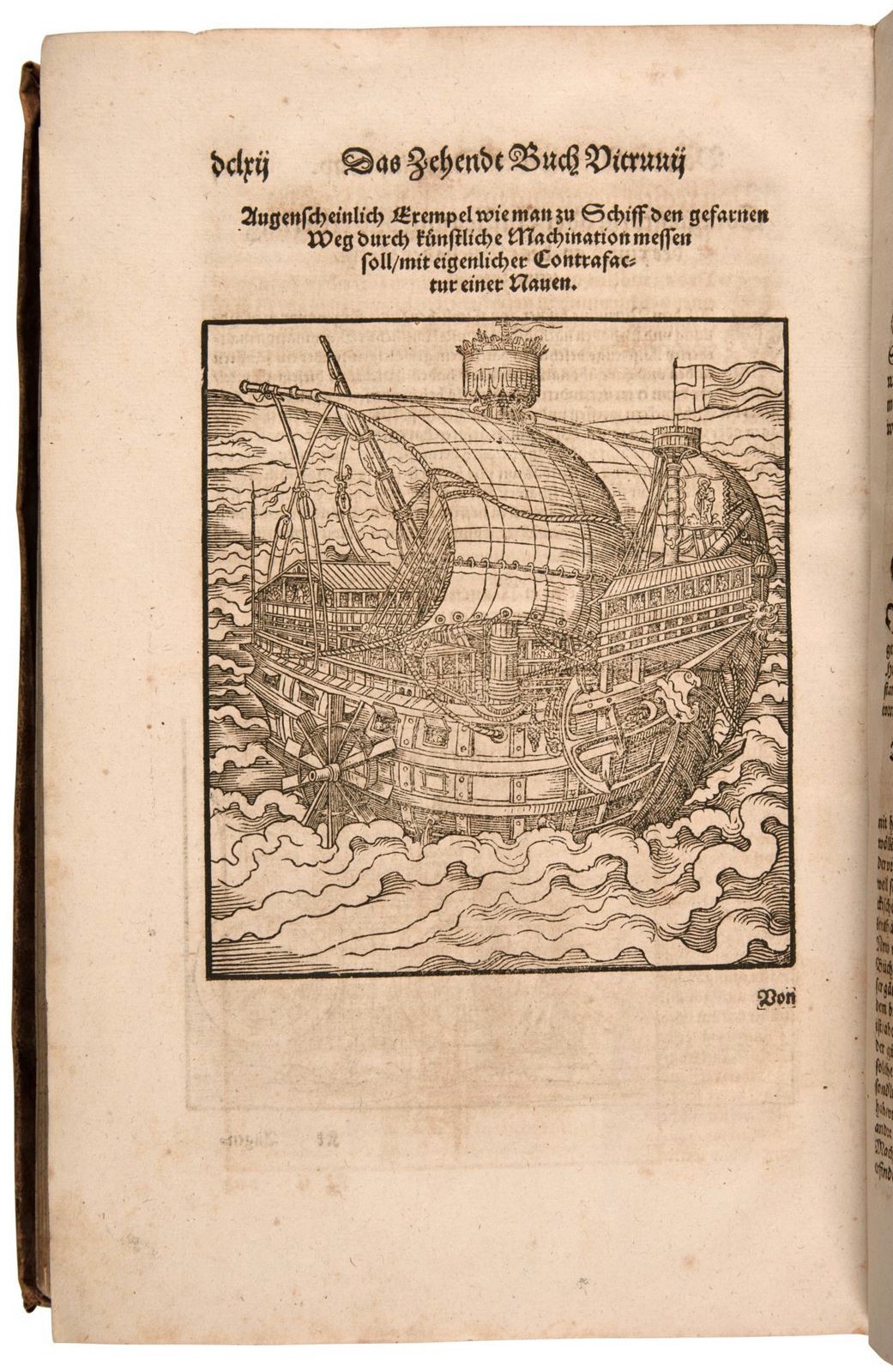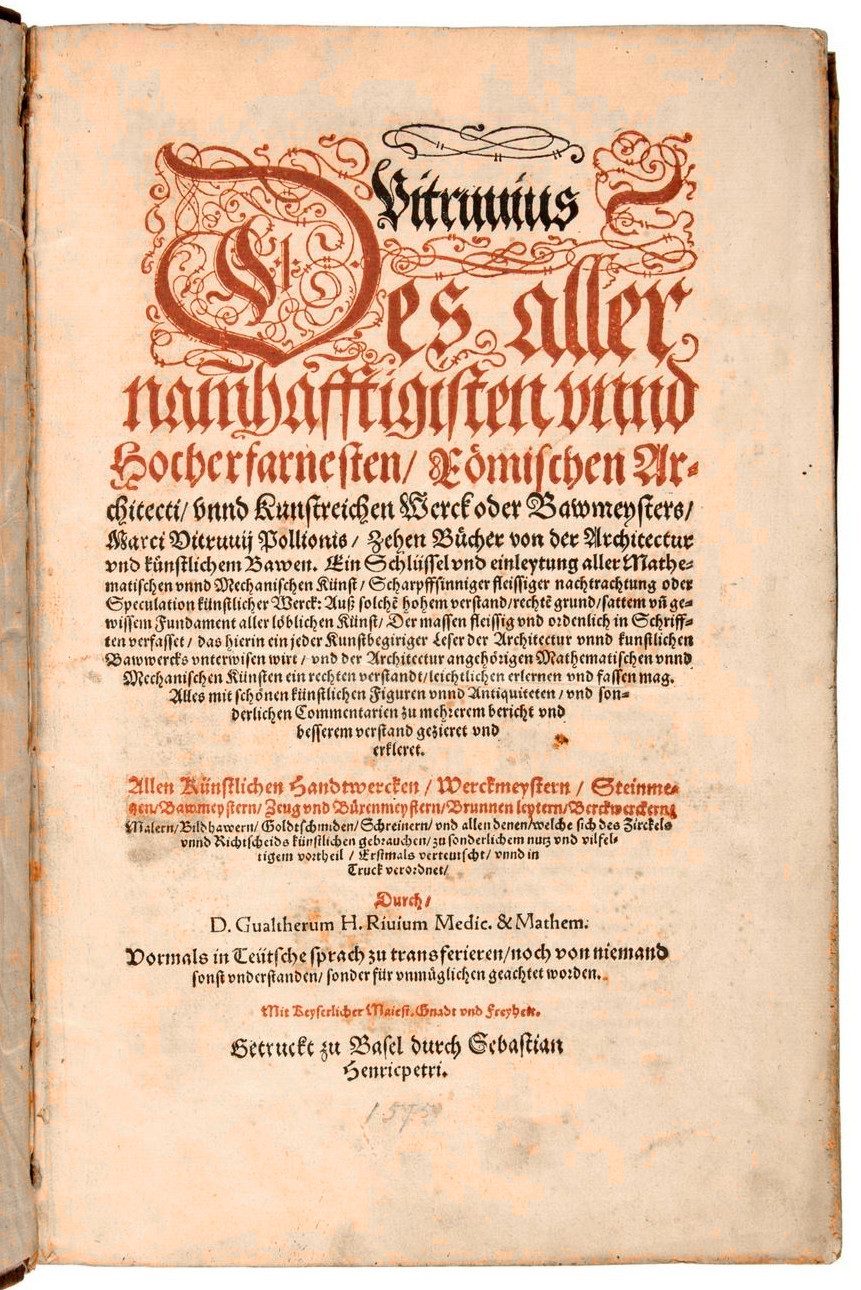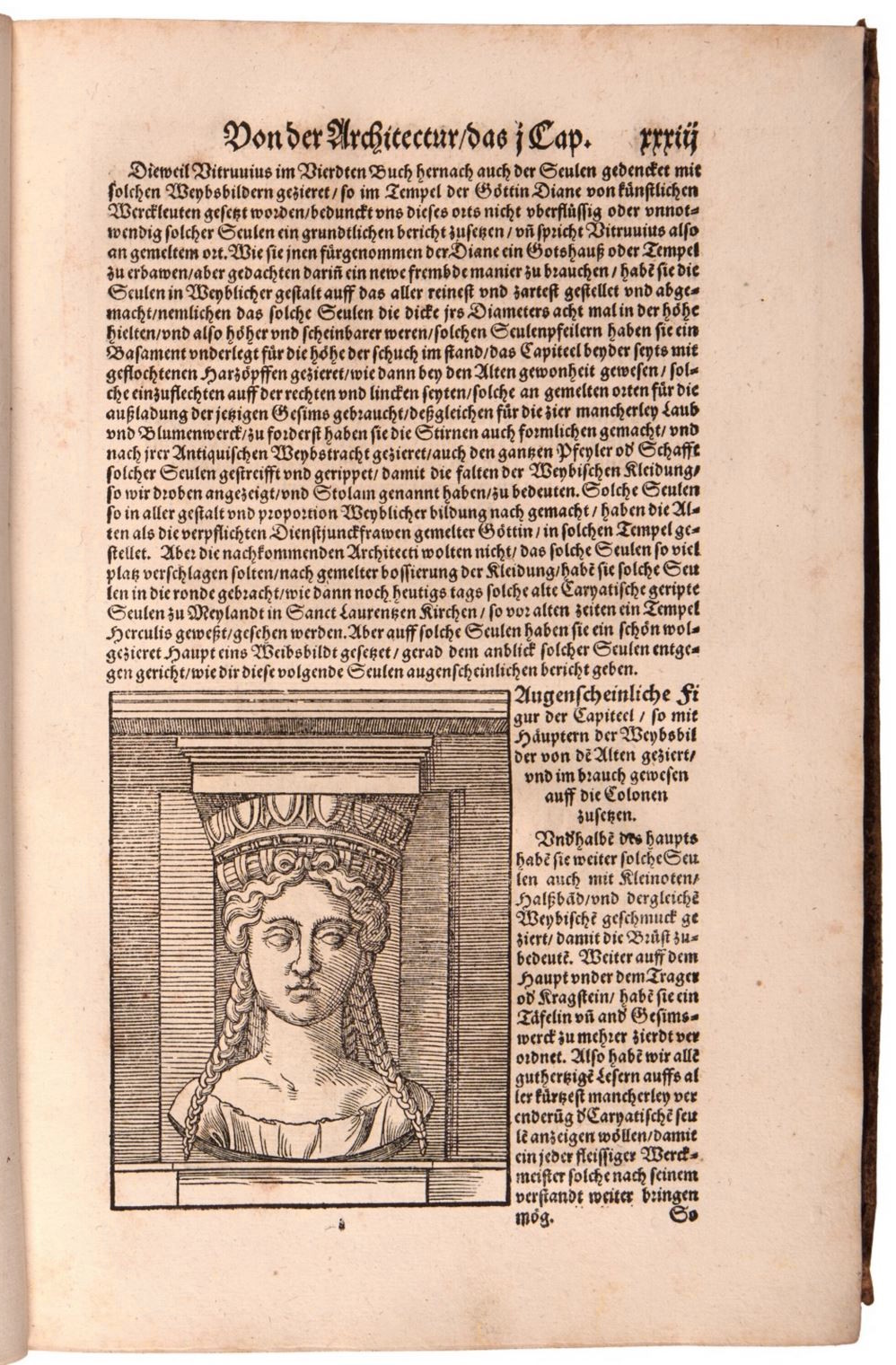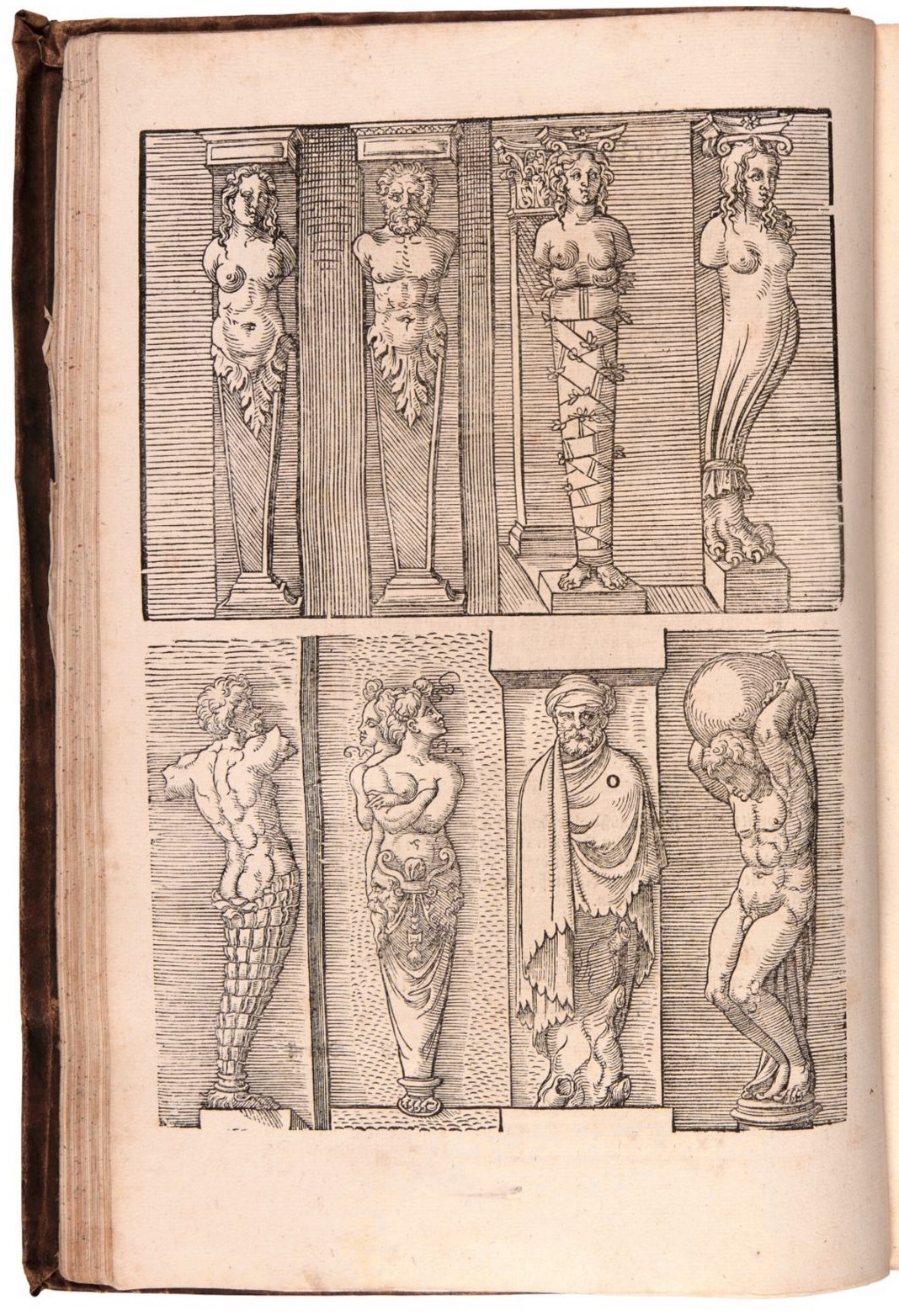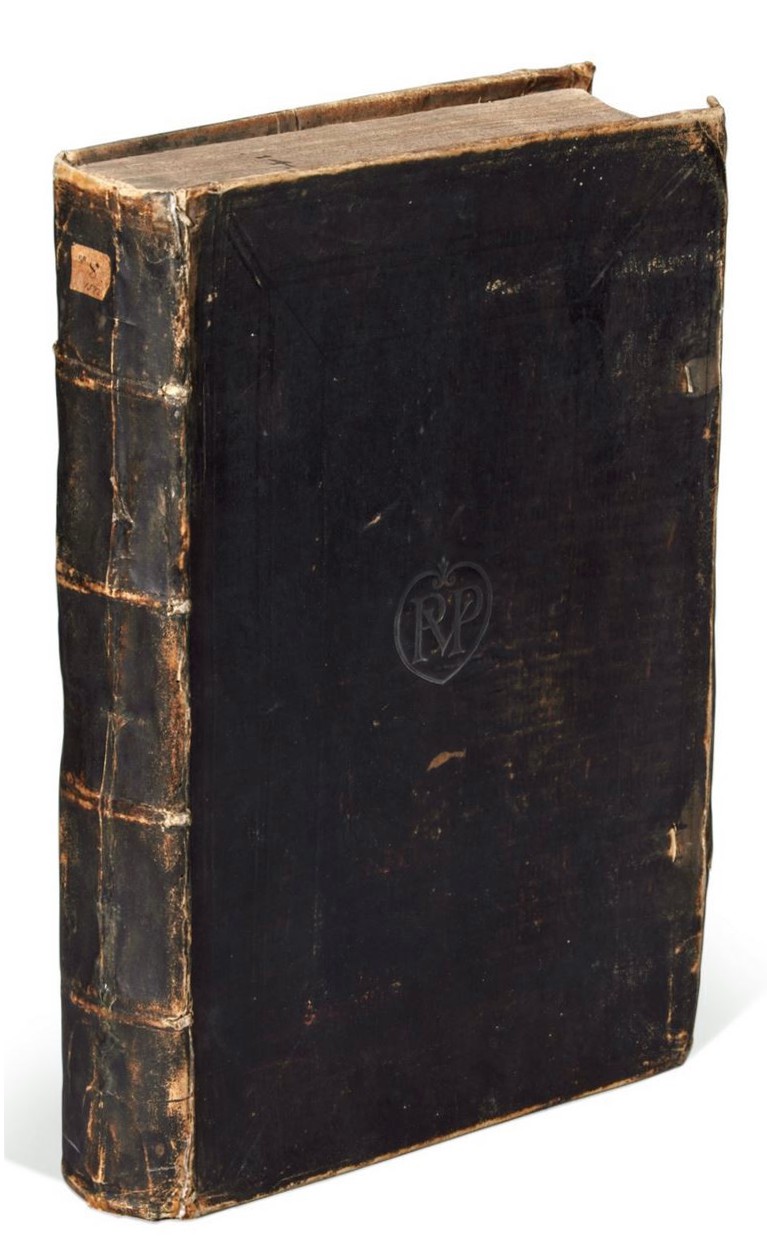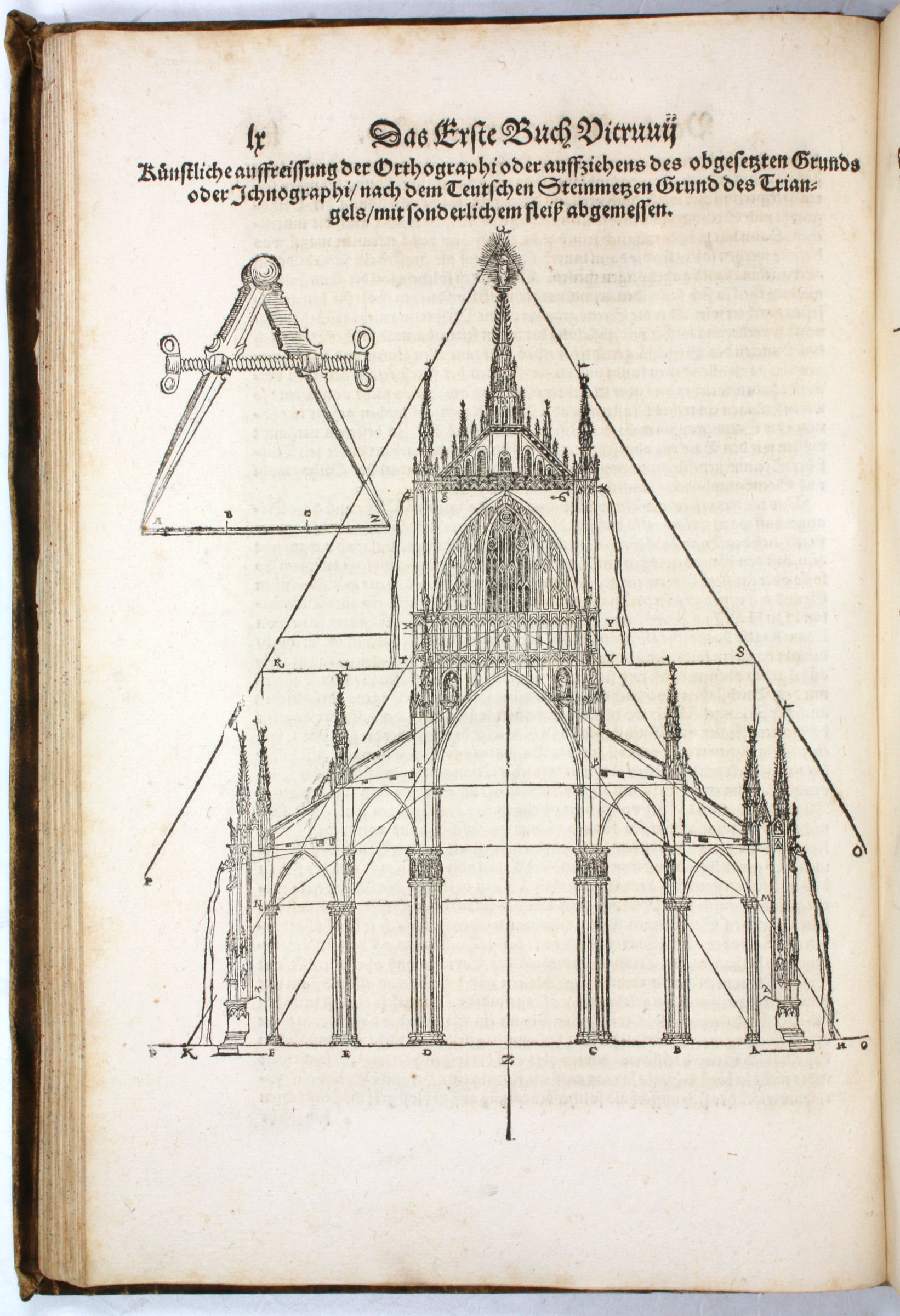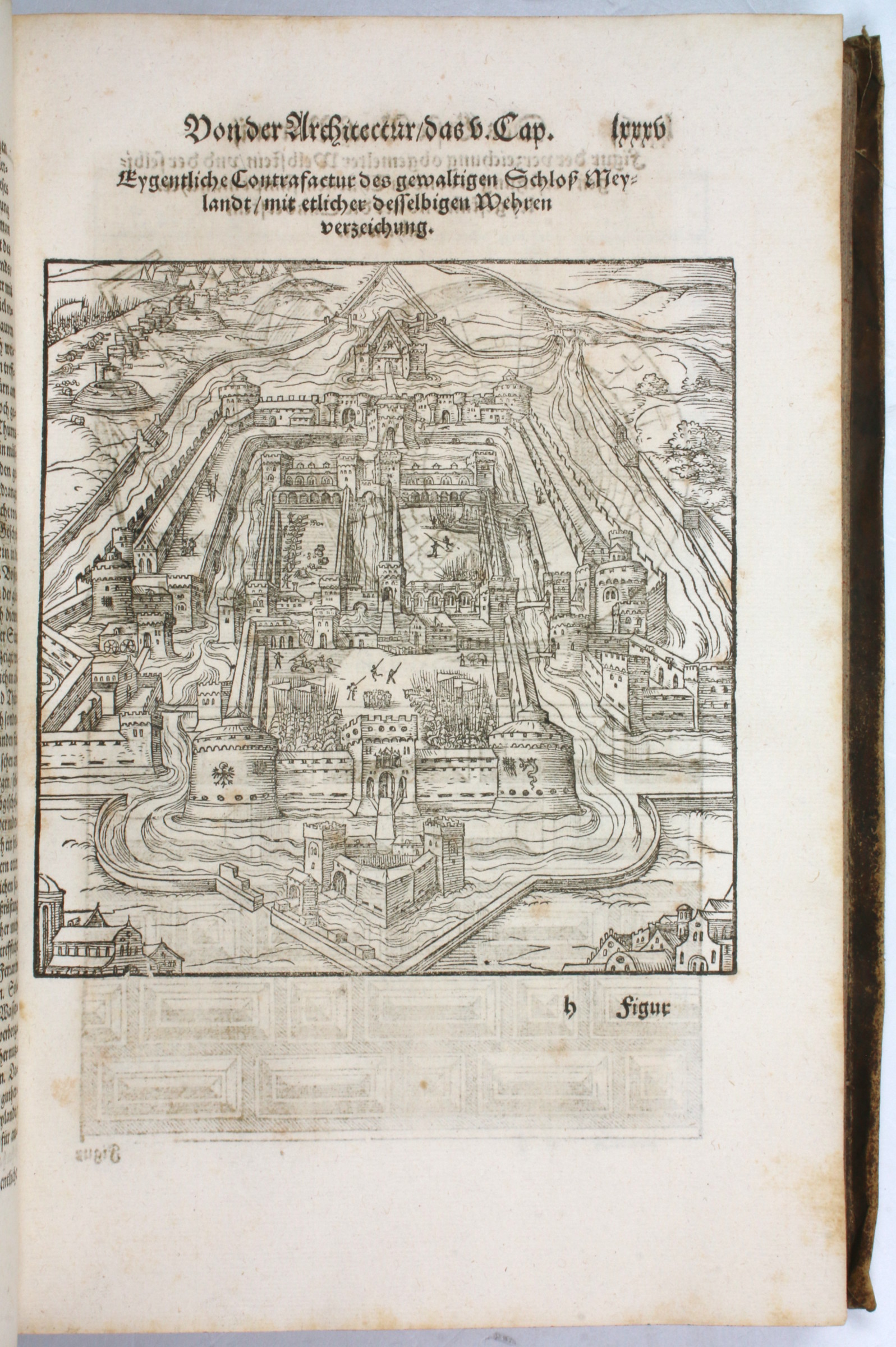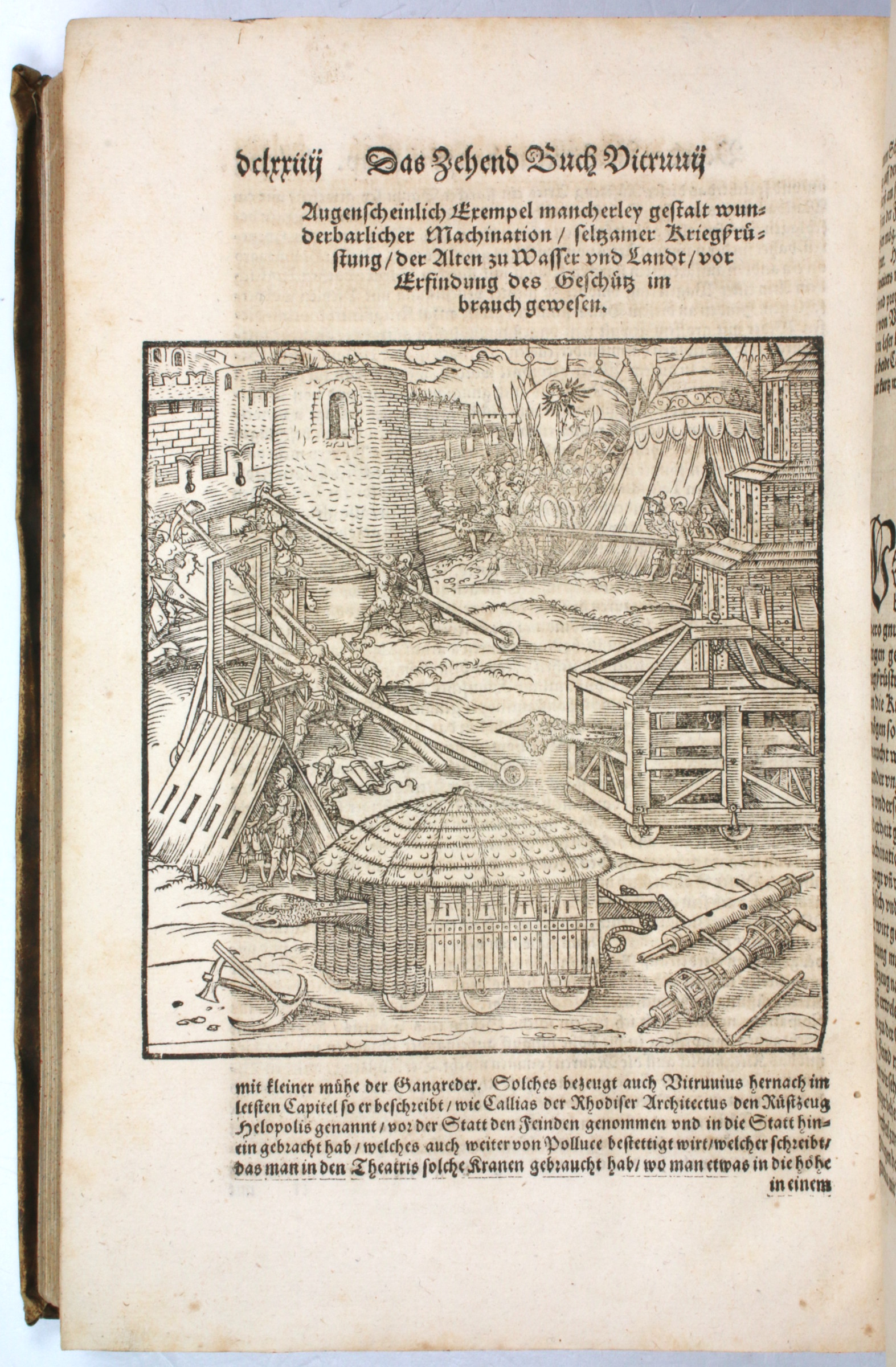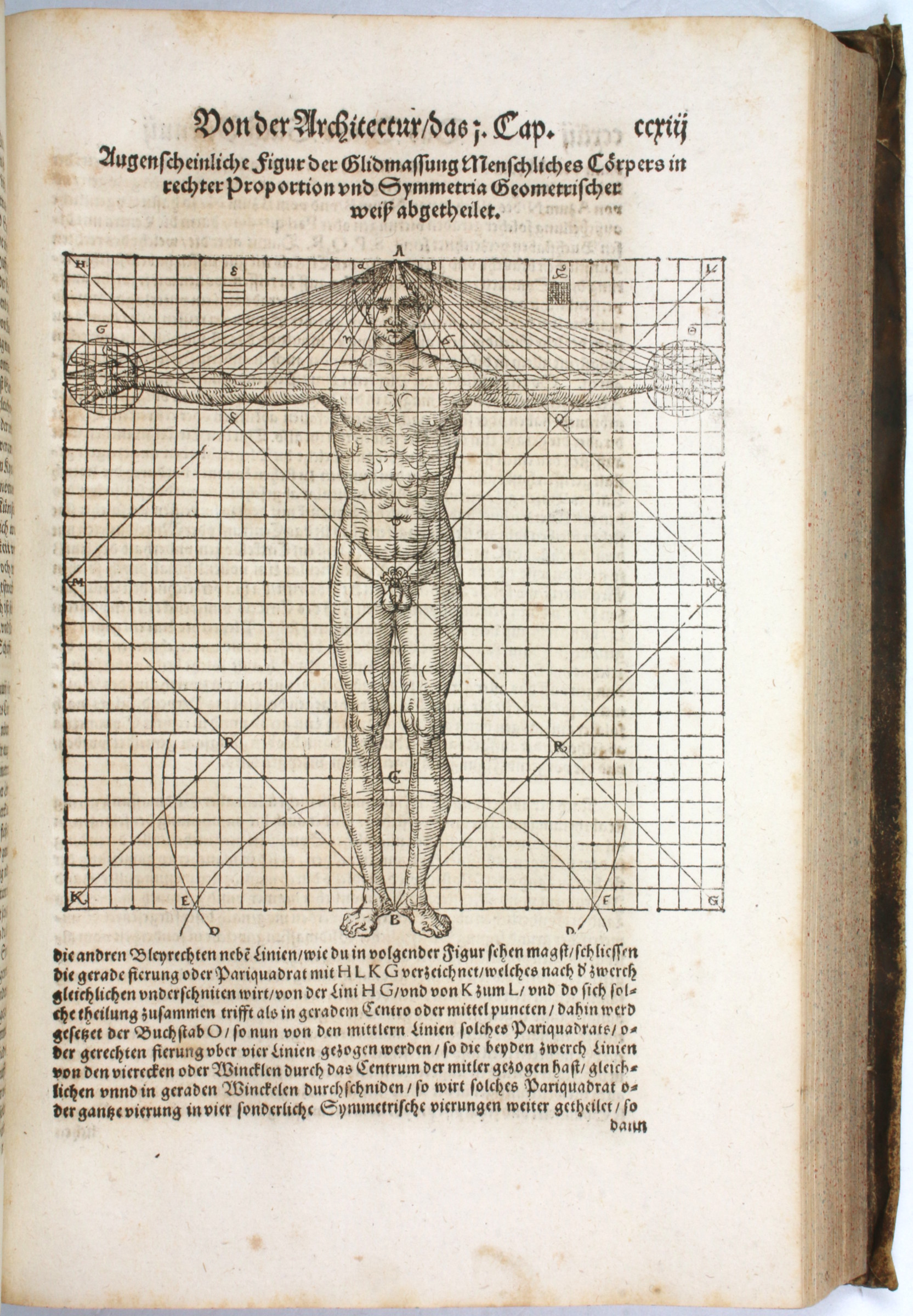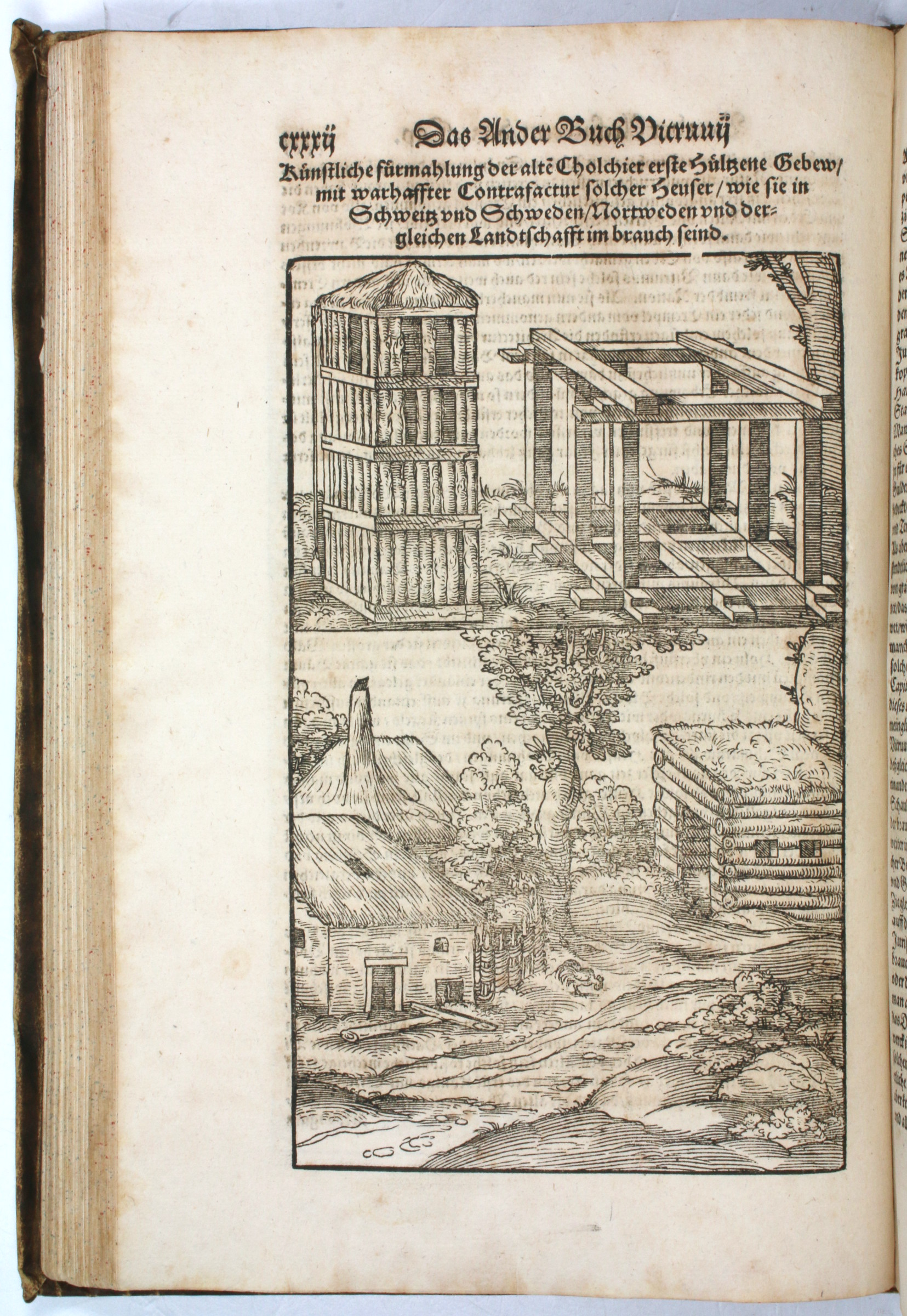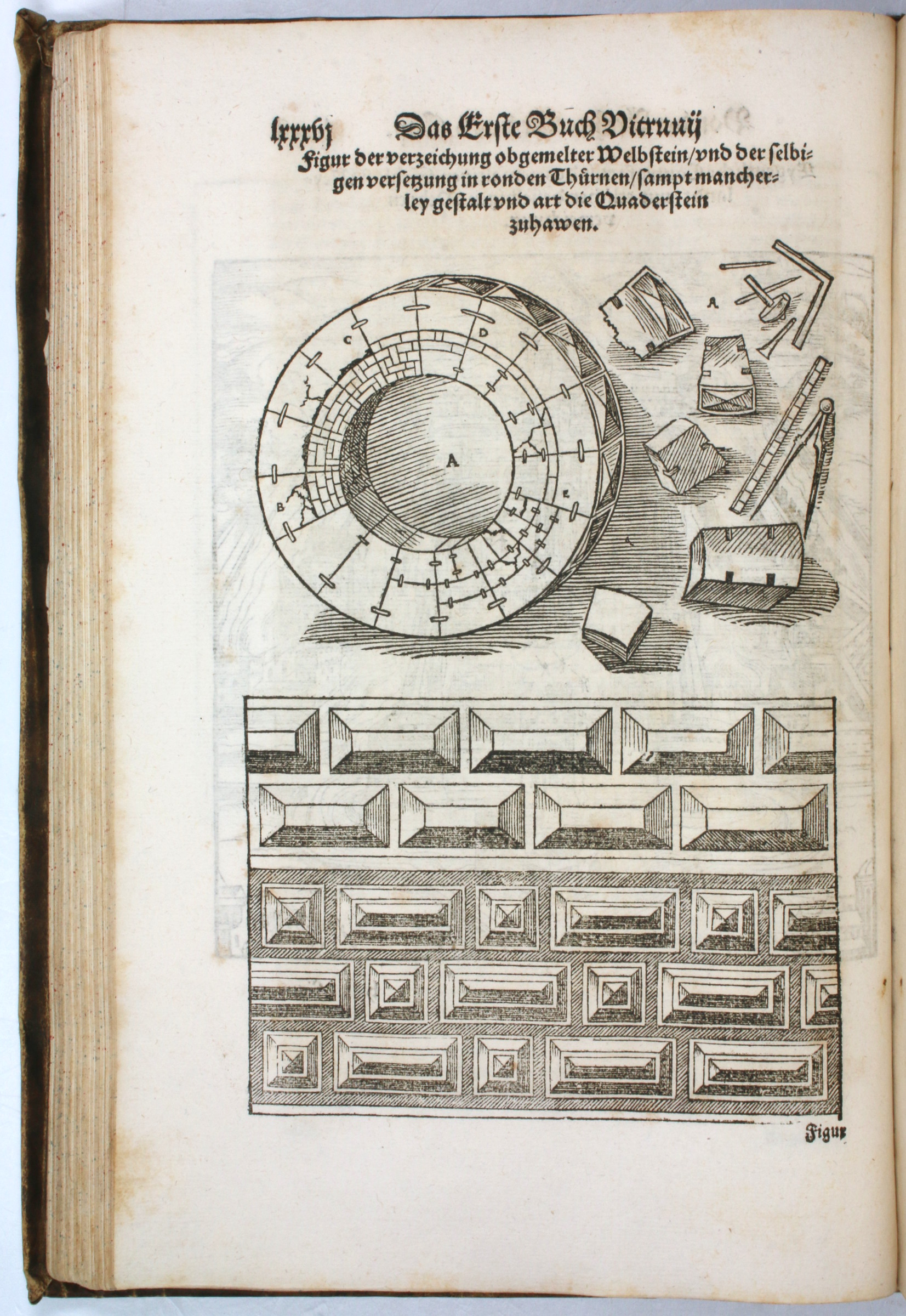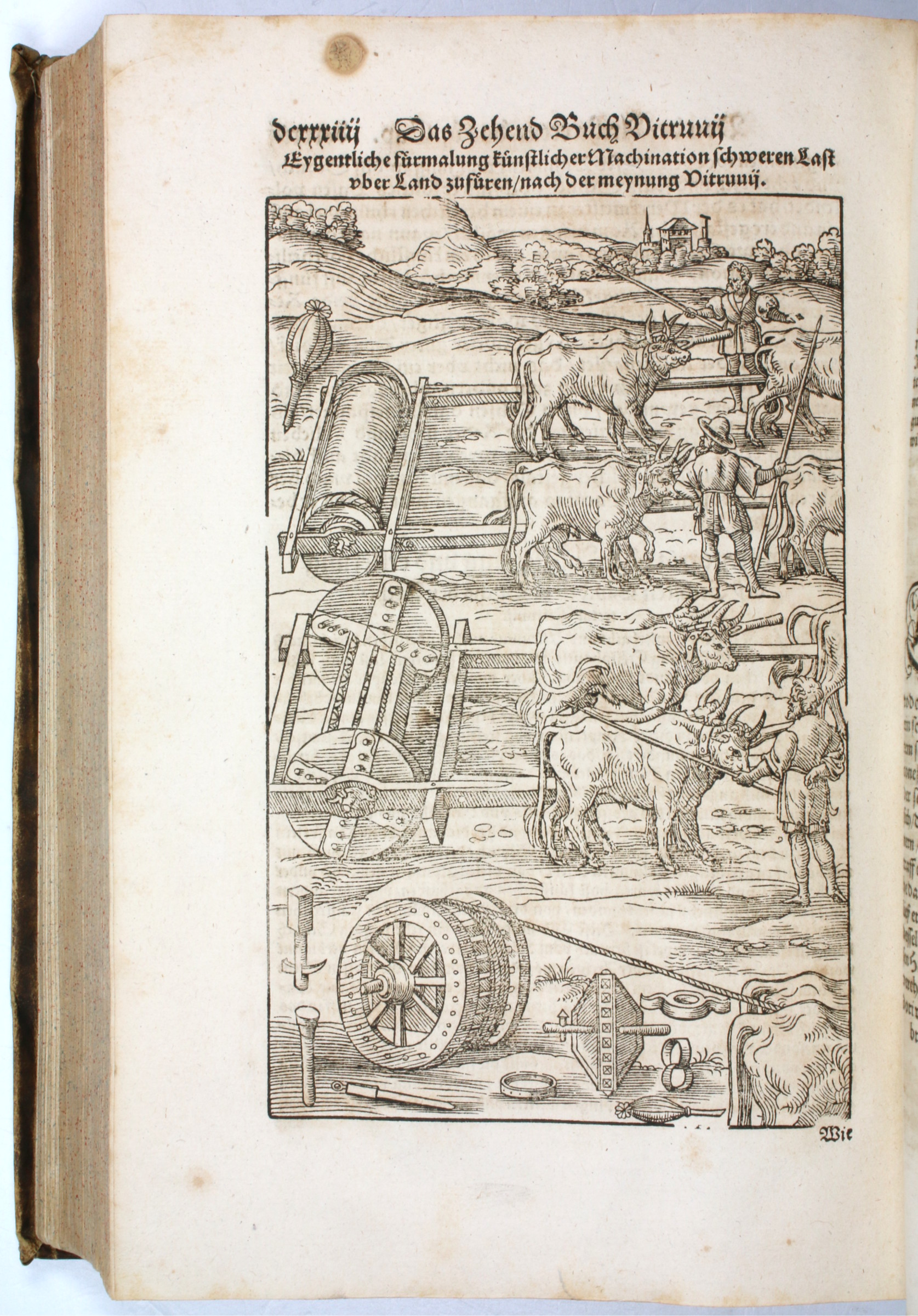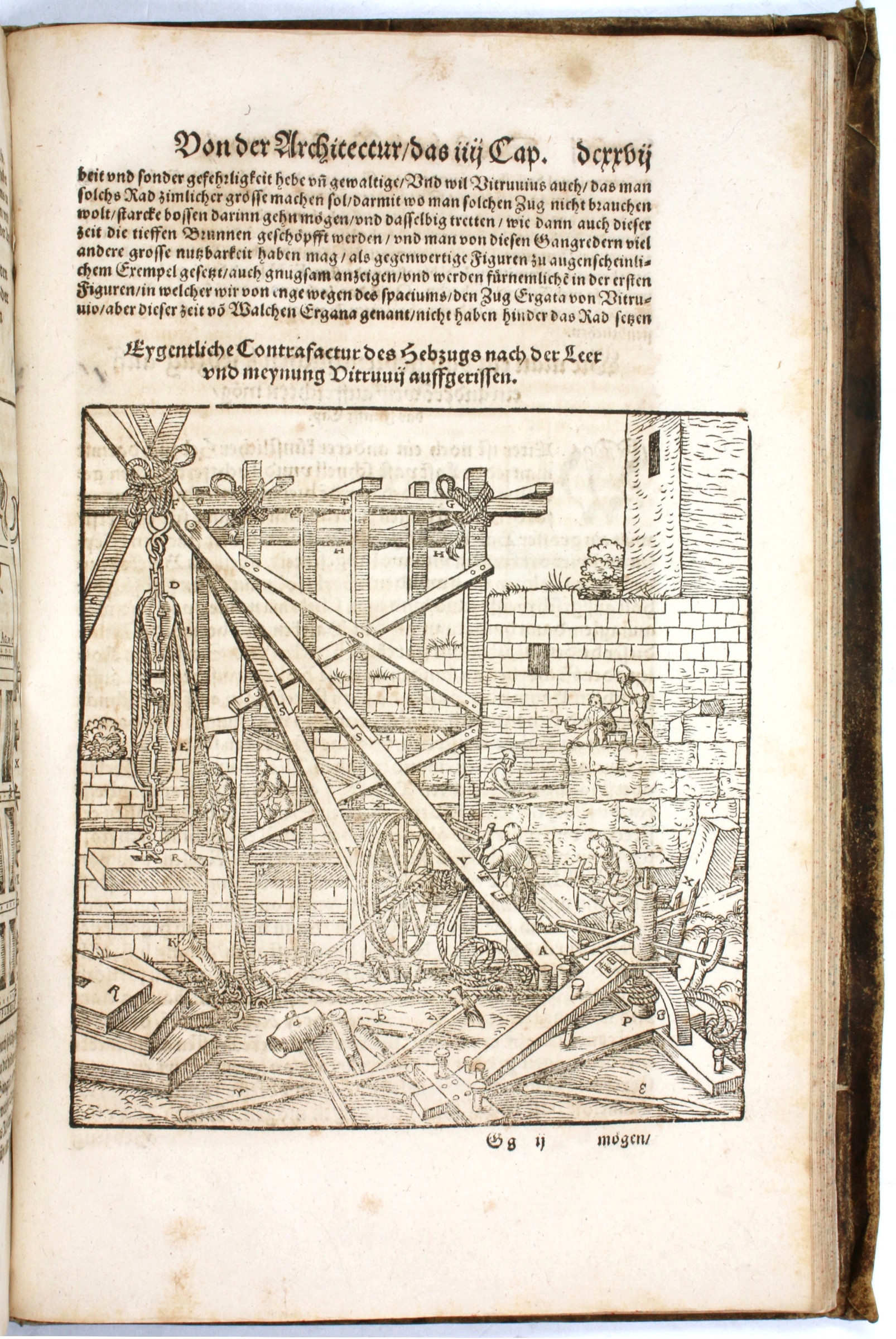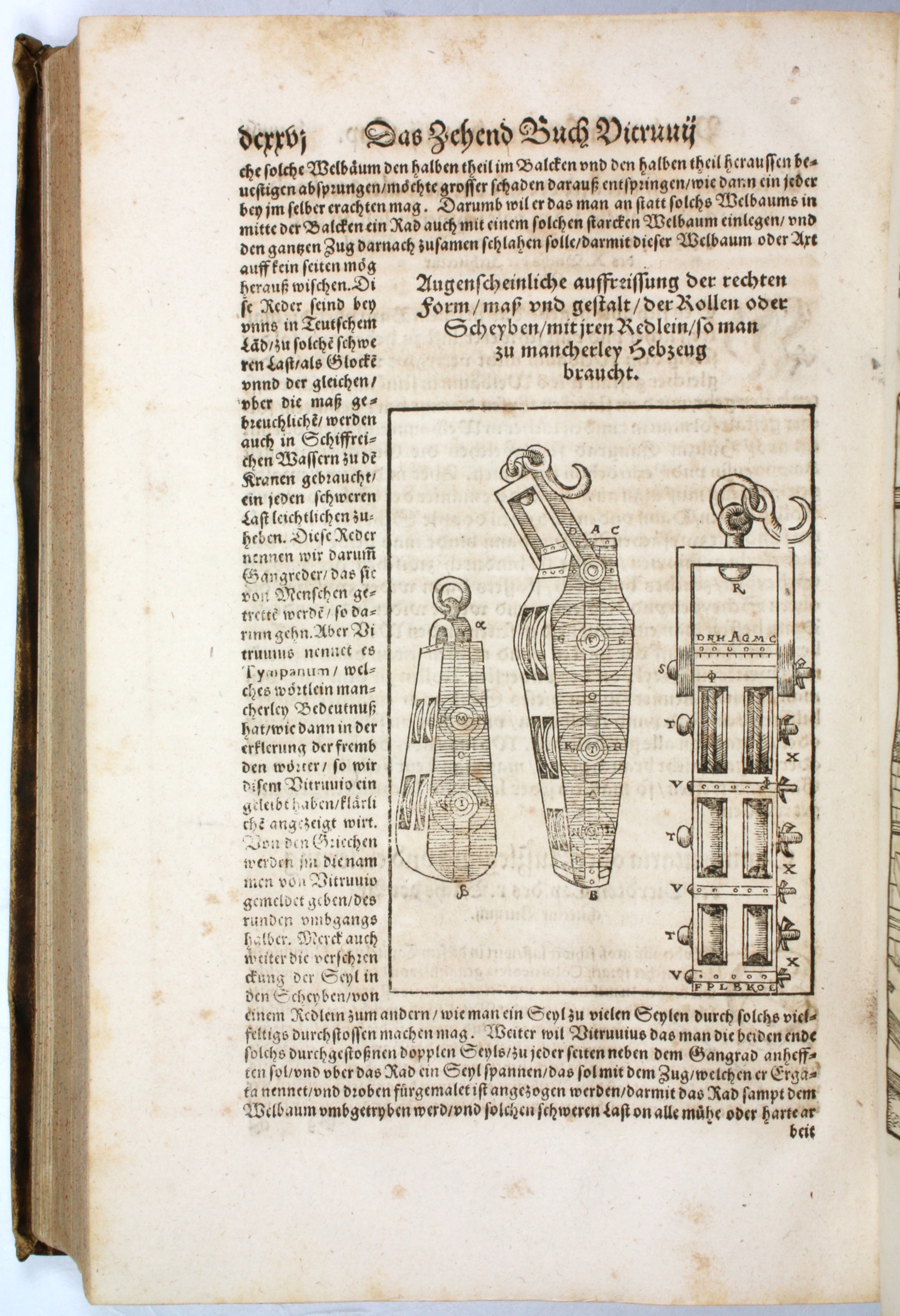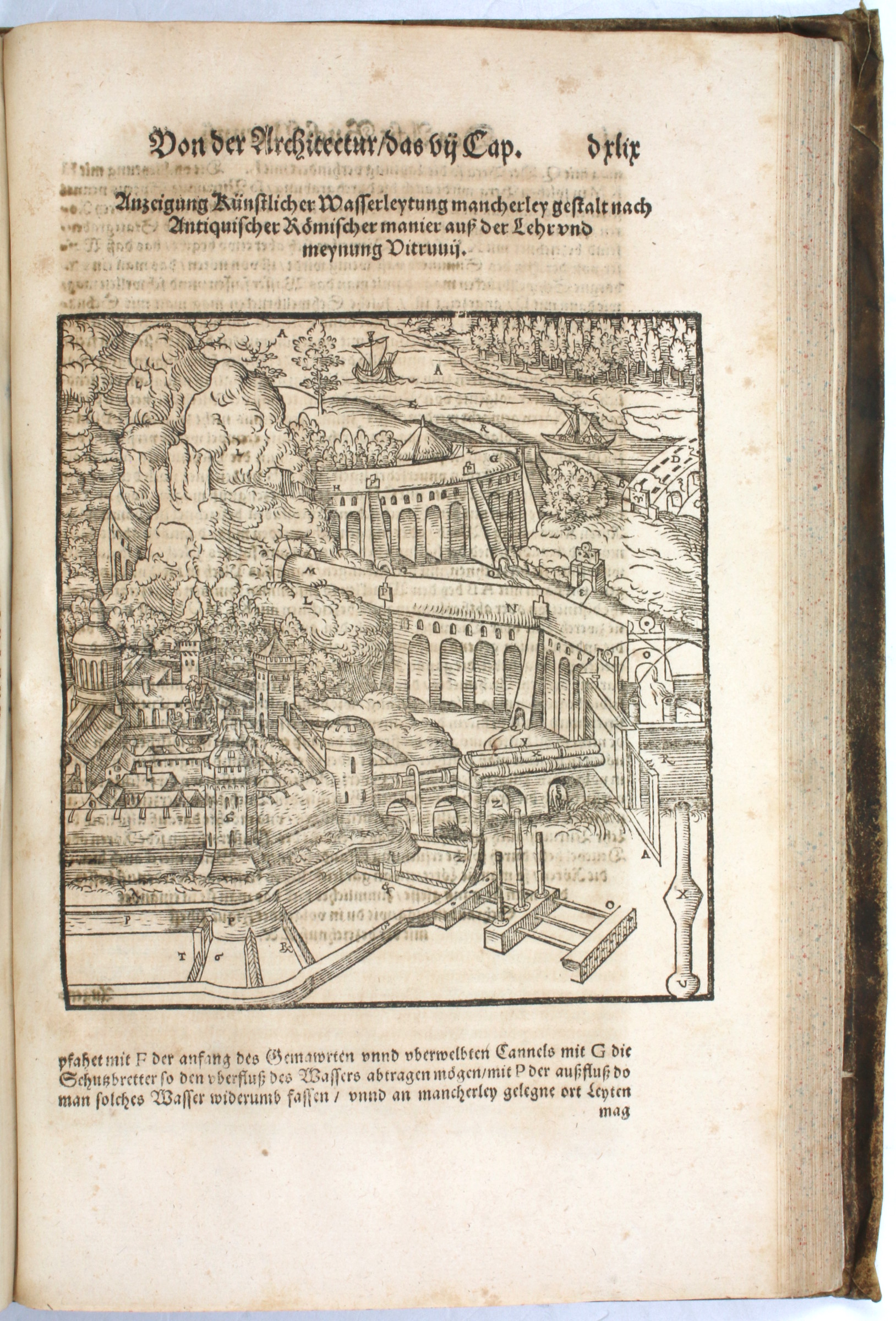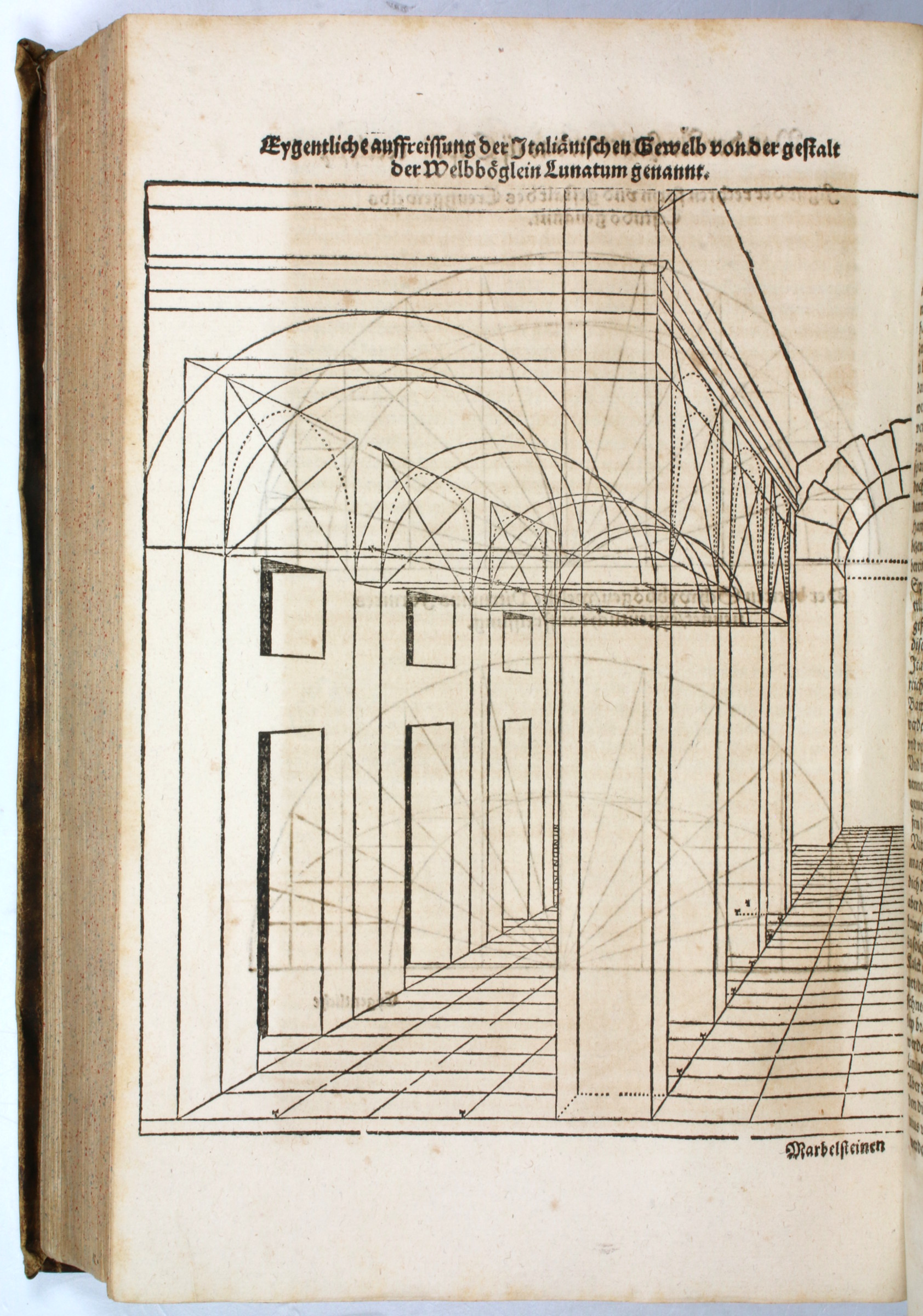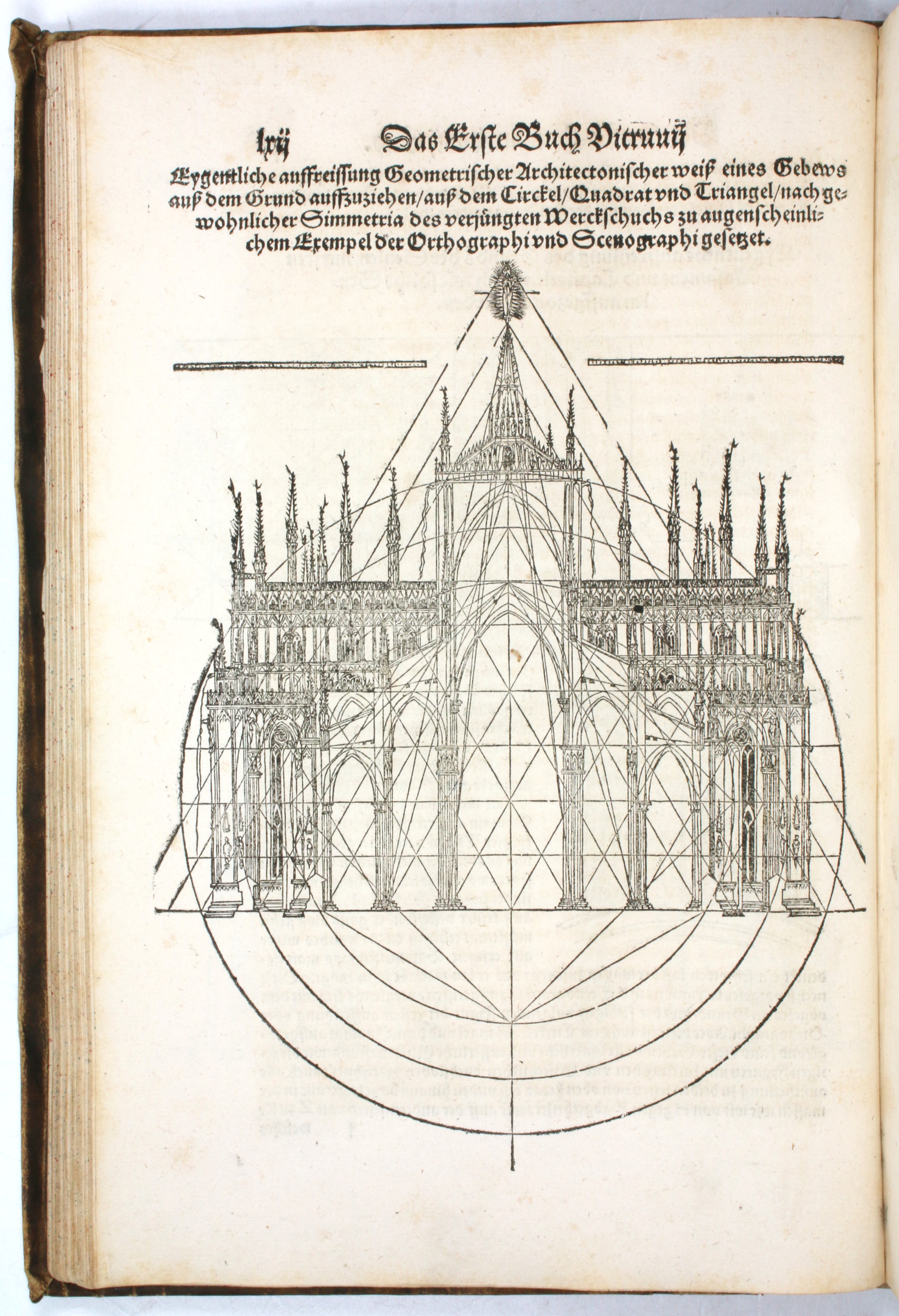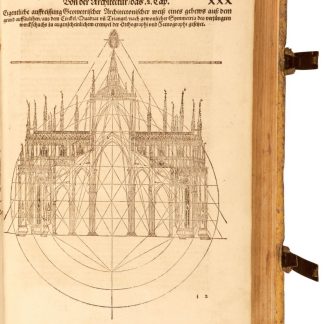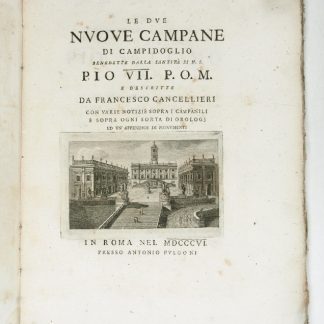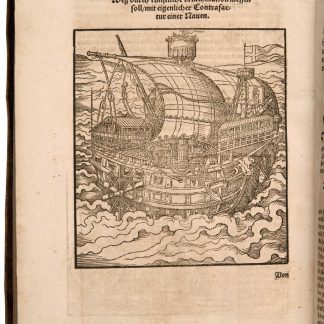The German Vitruvius: fine illustrated edition, Praun copy
Zehen Bücher von der Architectur und künstlichem Bawen. Ein Schlüssel und einleytung aller Mathematischen unnd Mechanischen Künst, Scharpffsinniger fleissiger nachtrachtung oder Speculation künstlicher Werck […]. Alles mit schoenen künstlichen Figuren unnd Antiquiteten, und sonderlichen Commentarien […] gezieret und erkleret.
Folio. (34) pp., 1 blank leaf, DCLXXXI, (1) pp. Title-page printed in red and black with first words printed from a woodcut. With 193 woodcut illustrations and diagrams. Near-contemporary full vellum, stained black, central gilt stamp with the monogram "PVP" on upper cover; traces of 2 pairs of leather ties.
€ 18,000.00
A handsome copy of the first German translation (in its second edition) of the only architectural treatise to survive from classical antiquity. Considered the supreme authority by Italian Renaissance architects, it became the single most influential work for the later development of European architecture.
The translation by Walther Hermann Ryff (Rivius) was first issued in 1548. This finely illustrated edition boasts a total of 190 woodcut blocks, the majority of which are reprinted from the first. "The illustrations are attributed to Peter Flötner, Virgil Solis, Georg Pencz, Hans Brosamer and Erhard Schön, with initial letters by Hans Springinklee. They are mainly based on the 1521 Como edition, but many of the plates were used in Ryff's Bawkunst [1547]" (Fowler, p. 317f.). Chipps Smith concludes that Flötner was the principal artist of the project and that his designs were followed by Solis and Pencz. "Excepting Serlio's 'General Rules of Architecture' of 1542, the 'Vitruvius teutsch' was the first significant architectural treatise published in German. Much of the technical information was still relevant to 16th century architects and artists" (Chipps Smith).
This copy was originally owned by Baron Paul von Praun, one of the greatest art collectors of his day, who owned 250 significant paintings (including Michelangelo, Raphael, Leonardo, Dürer, and Titian), as well as forty terracotta models by Michelangelo. The present volume appears in Christoph Theophile de Murr's 1797 inventory of the collection (where it is listed as "Vitruvius verteutschet durch D. Gaultherum H. Rivium, Med. et Mathem. Basel, 1575").
1) Baron Paul von Praun (1548-1616, merchant of Nuremberg who lived in Bologna), with his "PVP" monogram on upper cover, and plausibly with the ink inventory number ".14." of his library on top edge. 2) Bequeathed to his heirs as part of the "Praunsches Kabinett" in Nuremberg (Description du Cabinet du Monsieur Paul de Praun a Nuremberg, 1797, p. 489). 3) Jean Frédéric Frauenholz & Cie., Nuremberg, sale of the Paul de Praun collection, February 1802, lot 1573. 4) Reiss & Sohn, Königstein im Taunus, sale 112, 24-26 April 2007, lot 410. 5) Maggs Bros. 6) Sold to Thomas Kimball Brooker, oil industry executive (b. 1939) in 2008.
Folio (224 x 328 mm). Gothic type, 50 lines plus headline. (34) pp., 1 blank leaf, DCLXXXI, (1) pp.; collation: aa-cc6 a-z6 A-Ll6 = 360 ff. Title-page printed in red and black with first five words printed from a woodcut, 194 woodcut illustrations. Near-contemporary full vellum, re-using a vellum manuscript leaf (some red and black text just showing), stained black, covers with blind fillets and a central gilt stamp on upper cover with the monogram "PVP", foredges turned in, traces of 2 pairs of leather ties. Flat spine with old paper label at head, 4 cords and one at head and tail piercing spine to be laced in, edges lightly sprinkled brown.
Binding somewhat rubbed, with slight worming within. Leaf N5 with 3-inch expertly closed tear at lower margin; marginal worming to final leaves (not affecting text), some spotting and browning.
VD 16, V 1766. Fowler 412. Kat. der Ornamentstichslg. Berlin 1811. Schlosser 246. BAL RIBA 3516. Cf. J. Chipps Smith, Nuremberg, A Renaissance City, 1500-1618 (1983), no. 136. Not in Adams or BM-STC German.

